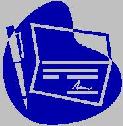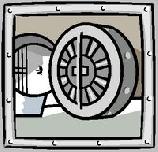
 |
|
| Financial Terms | |
| Point and figure chart |
|
Information about financial, finance, business, accounting, payroll, inventory, investment, money, inventory control, stock trading, financial advisor, tax advisor, credit.
Main Page: finance, investment, tax advisor, financial advisor, inventory control, money, credit, payroll, |
Definition of Point and figure chart
Point and figure chartA financial chart usually used to plot asset price data. Point and figure chartA price-only chart that takes into account only whole integer changes in price, i.e., a
Related Terms:Basis pointIn the bond market, the smallest measure used for quoting yields is a basis point. Each percentage Bond pointsA conventional unit of measure for bond prices set at $10 and equivalent to 1% of the $100 face Cash-flow break-even pointThe point below which the firm will need either to obtain additional financing ChartistsRelated: technical analysts. Corporate charterA legal document creating a corporation. Delivery pointsThose points designated by futures exchanges at which the financial instrument or  PointThe smallest unit of price change quoted or, one one-hundredth of a percent. Related: minimum price Price value of a basis point (PVBP)Also called the dollar value of a basis point, a measure of the change in Breakeven pointThe point at which total costs equal total revenue, i.e. where there is neither a profit nor a loss. breakeven pointThe annual sales volume level at which total contribution Basis PointOne one-hundredth of one percent break-even charta graph that depicts the relationships among revenues, variable costs, fixed costs, and profits (or losses) break-even point (BEP)the level of activity, in units or dollars, at which total revenues equal total costs control charta graphical presentation of the results of a order pointthe level of inventory that triggers the placement  organization charta depiction of the functions, divisions, split-off pointthe point at which the outputs of a joint process are first identifiable or can be separated as individual products value charta visual representation indicating the valueadded Basis pointOne hundredth of one percentage point, or 0.0001. Bollinger band chartA financial chart that plots actual asset data along Candlestick chartA financial chart usually used to plot the high, low, open, High-low-close chartA financial chart usually used to plot the high, low, Moving-averages chartA financial chart that plots leading and lagging Breakeven pointThe sales level at which a company, division, or product line makes a Chart of accountsA listing of all accounts used in the general ledger, usually sorted in Split-off pointThe point in a production process when clearly identifiable joint costs Basis PointOne one-hundredth of a percentage point, used to express variations in yields. For example, the difference between 5.36 percent and 5.38 percent is 2 basis points. Turning PointThe trough or peak of a business cycle. Free-on-Board (FOB) Shipping PointA shipping arrangement agreed to between buyer and Order penetration pointThe point in the production process when a product is Outbound stock pointA designated inventory location on the shop floor between Point-of-use deliveryA delivery of stock to a location in or near the shop floor Point-of-use storageThe storage of stock in a location in or near the shop floor StockpointAn inventory storage area used for short-term inventory staging. point of sale (POS)The terminal at which a customer uses his/her debit card to make a direct payment transaction. See also Interac Direct Payment. Related to : financial, finance, business, accounting, payroll, inventory, investment, money, inventory control, stock trading, financial advisor, tax advisor, credit. |